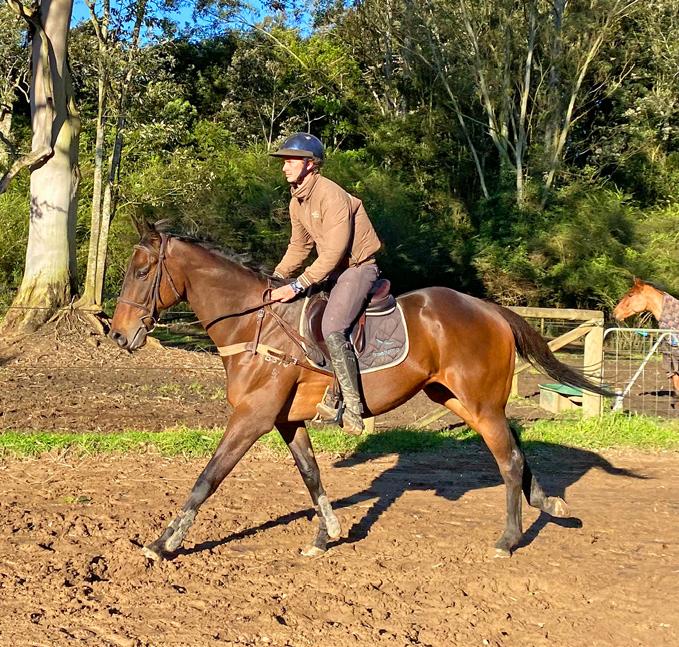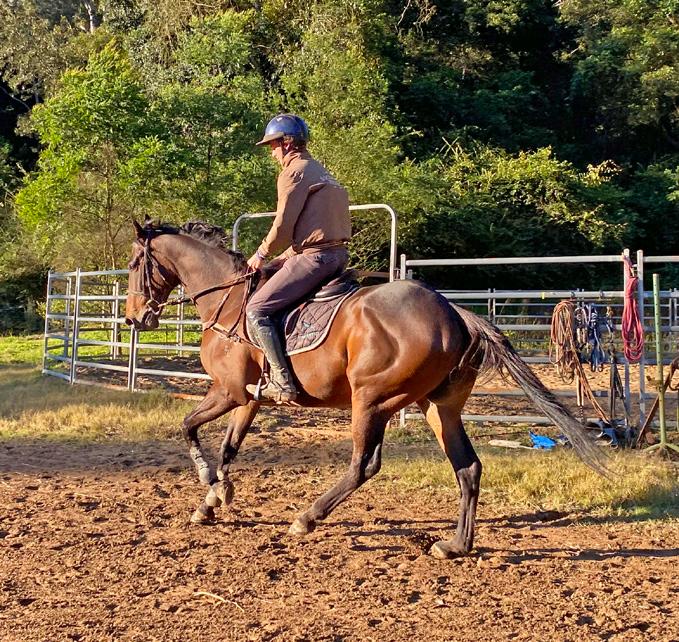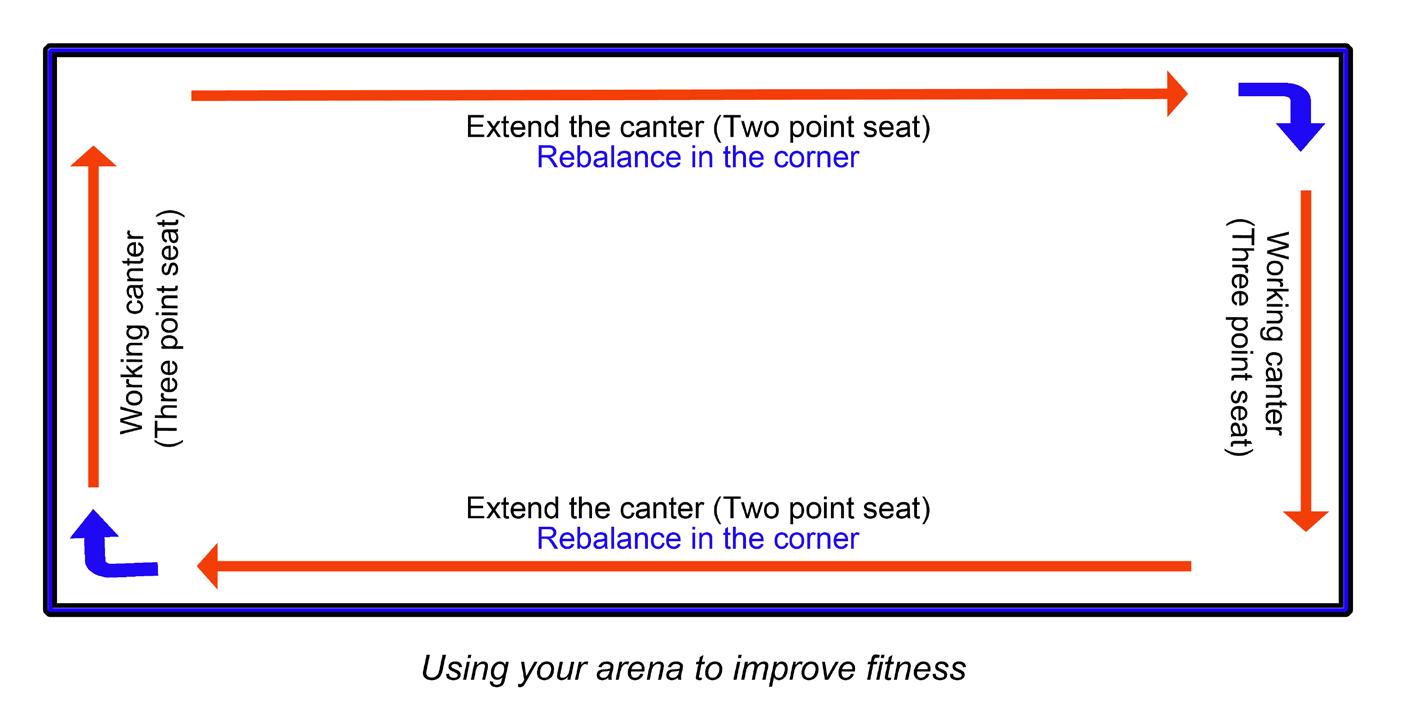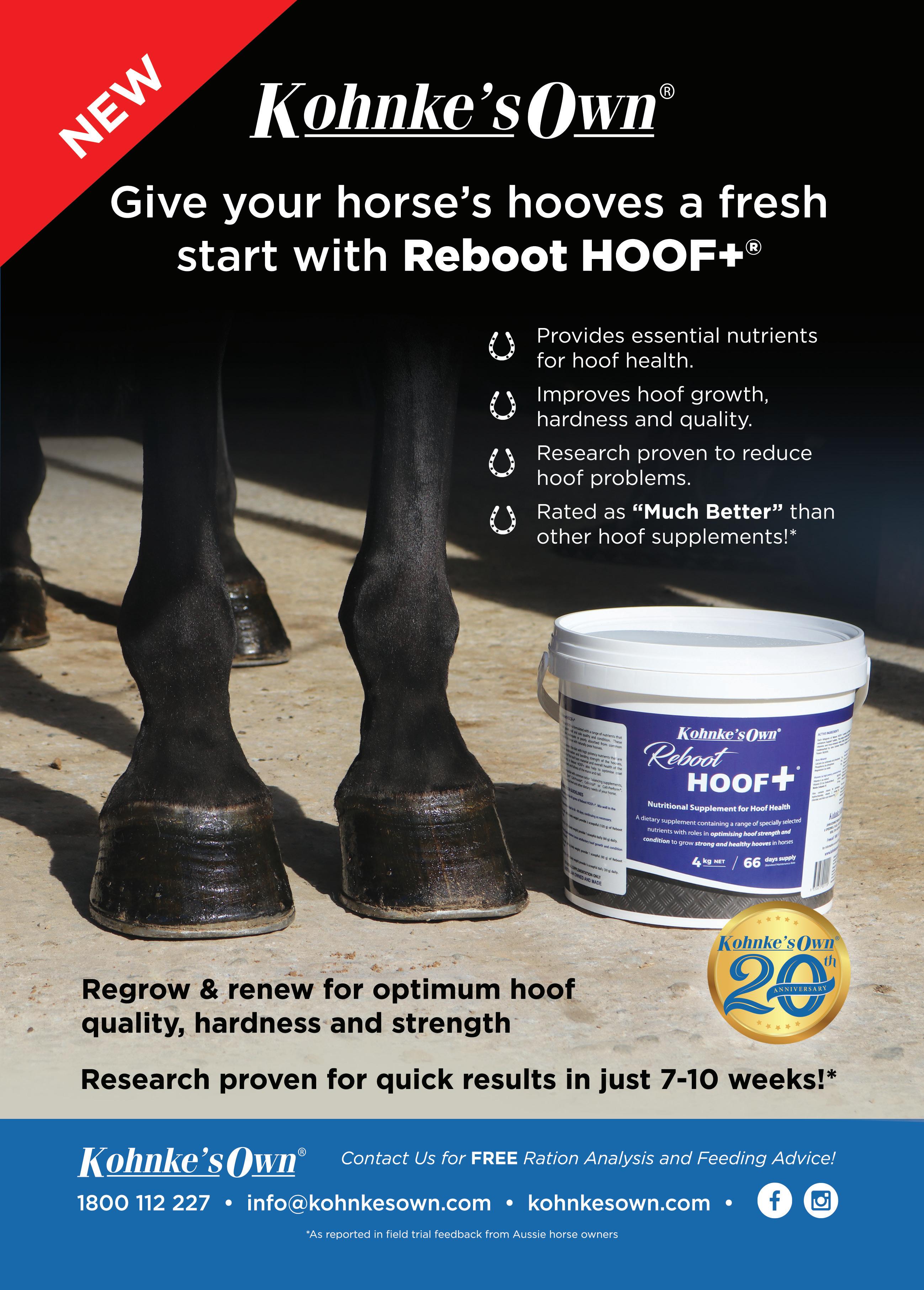
6 minute read
Brister’s Brief
BRISTER’S BRIEF
Fit to go: show jumping
In Part One of CHARLIE BRISTER’S two part fitness series, he offers some expert thoughts on how to prepare your equine athlete for the show jumping ring.
Jumping an 80cm course may not take much work for the average horse, but what can we do to help ensure we’re riding a happy, healthy athlete? How much cantering should you do? What speed should you train at? It is a bit like the human fitness space, there are so many options. Should you do HIIT, weightlifting, running or Pilates? Similar to people, variety of training helps to provide a solid foundation.
Let’s break down fitness into different components. There’s the cardiovascular fitness needed to maintain the speed and impulsion of the canter throughout your round. Then there’s the strength your horse needs to push from the hind end when taking off for an obstacle. Finally, there’s the conditioning necessary to prevent injury – which
Jumping should be part of your horse’s work schedule but don’t overtrain
means your horse can handle the repetition of multiple jump rounds on the same day without undue stress on the joints and ligaments.
And there are other important considerations:
What height are you jumping?
At 60cm most horses don’t require a lot of athleticism to clear obstacles. What they do need is basic trainability and education. This will enable them to navigate the course easily and help in their progression up the heights. At 1.30m a horse requires a lot more strength and power.
What speed are you going?
Generally speaking, the higher the jumps, the quicker the speed. Also, when the jumps are considerably higher the horse spends slightly longer in the air – only a fraction of a second but this adds up over the course of the day. Therefore, as the jumps get higher your horse needs to be fitter and more rideable at speed.
The Equestrian Australia rule book states that in outdoor show jumping competitions of less than less than 1.05m, the required speed is 325 meters per minute (mpm), more than 1.30m requires 375mpm. For comparison, a 4* cross country is 570mpm.
What surface are you on?
Is your horse used to jumping on grass at home but competing on sand, or vice versa? Your horse may feel different depending on the surface. If the grass is wet it can be drastically different to riding on sand – and a deep muddy footing will be physically more taxing on your horse. Many top English riders take their horses through muddy fields at slow speed to condition them for the less than ideal conditions that can occur at competitions.
What breed is your horse?
A Thoroughbred will probably need less work on its cardiovascular fitness and more work on their ride-ability and strength to push off from behind. Whereas a Warmblood is likely to need more work on their fitness and rideability, but less strength training.
Is your horse easily adjustable?
The more balanced and ride-able your horse, the more efficient it will be in its jumping round. You’ll need to spend less time increasing and decreasing the canter, which will make things easier for you both. A horse that’s heavy on the forehand will require more training and more time between fences to rebalance.
How about the weather?
If you’re competing in the warmer months, be mindful of when you’re training. If you train early in the morning or late in the afternoon, how will your horse cope when you have to compete in the middle of the day? Don’t ride in temperatures that are dangerously high, but occasionally you both need to train in hotter weather so your fitness is at an appropriate level for the extra stress heat will put on you at the competition.
Diet
This depends on your particular horse’s needs and the level of jumping. If your horse is fat, feed it less. If your horse is skinny, feed it more. If your horse is hot, feed less grain/pellets and more fibre. If your horse is a bit dull, feed more grain/ pellets. As you’ve probably realised, this is an oversimplified look at your horse’s nutritional requirements. What it does suggest is that much depends on you noticing how your horse looks and feels. By all means call a nutritionist for more advice, but also trust your gut instinct on what’s best for your steed.
All of the above factors impact on what training you need to do. Simply put, regular training sessions will give you a good foundation on which to build. If you ride five days per week, chances are your horse will be fit enough for low level jumping. And going back to your gut instinct, how does your horse feel after jumping a course? Are they puffed or ready to keep going? Do they tend to have a rail down towards the end of the round? This will give you a rough guide as to whether you need to increase your horse’s fitness or not.

A fast canter on the long side of the arena with two point seat.

Return to a three point seat on the short side of the arena.

Repeat this exercise on each rein, adding more repetitions as fitness improves.
Even if you’re short on space, if greater fitness is needed try going at a faster pace around your arena four or five times, rebalancing before each of the short sides before accelerating down the long side again. This simulates the added adrenaline of a competition, and will also ensure you can still balance your horse when travelling at a higher speed. Repeat this on each rein, and if your horse is doing that easily add extra repetitions.

This is best to do in the middle of your training sessions when your horse is adequately warmed up. And if they get a bit over-excited you’ll have time to calm them down and reinforce their rideability before ending the ride.
Your horse’s work plan
Assuming your horse is already in consistent work, here’s a possible work plan. If returning from a spell in the paddock, you’d want to build the workload up gradually and not jump in the first week.
Week 1
Monday: Wake up, caffeinate, flatwork Tuesday: Pole work, ride-ability exercises Wednesday: Hack or trail ride Thursday: Flatwork Friday: Jumping lesson
Week 2
Monday: Wake up, caffeinate, flatwork Tuesday: Hill work or up tempo work around the arena Wednesday: Hack or trail ride Thursday: Flatwork Friday: Jumping, grid-work
Week 3
Monday: Wake up, caffeinate, flatwork Tuesday: Jumping course work lesson Wednesday: Hack or trail-ride Thursday: Pole-work/ride-ability exercises Friday: Flatwork Saturday: Training day/competition
This is a rough guide and can of course be altered depending on your schedule and your horse’s requirements. The main idea is the variety of training, and note the inclusion of easy days. To prevent injury and sourness, it’s important not to overtrain your horse.
If in doubt make sure you go for a jump lesson with a knowledgeable coach. They’ll be a great source of information on all the topics mentioned above. Your coach will help to gauge where your horse’s fitness is at, and provide suitable exercises to help get you to where you need to be.
Don’t miss Part 2 of Fit to go in our November/December issue, when we tackle eventing. Charlie is preparing an instructional video to guide you through this article. To watch, jump into our VIP area. We’ll announce on our social pages and via email to our VIPs when it’s live, so stay tuned.












